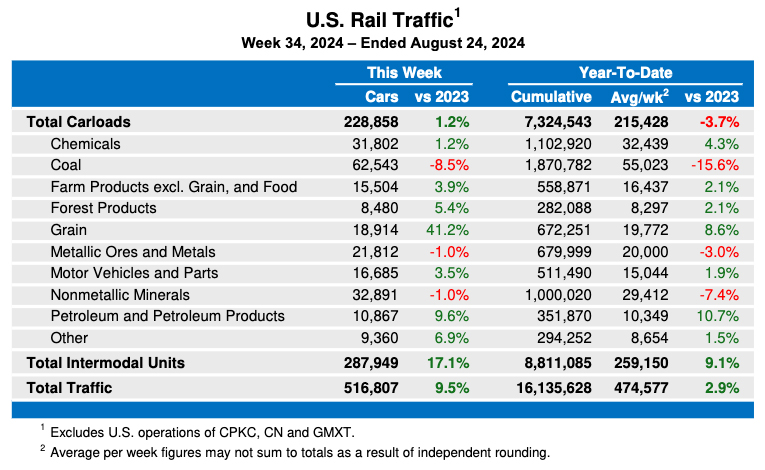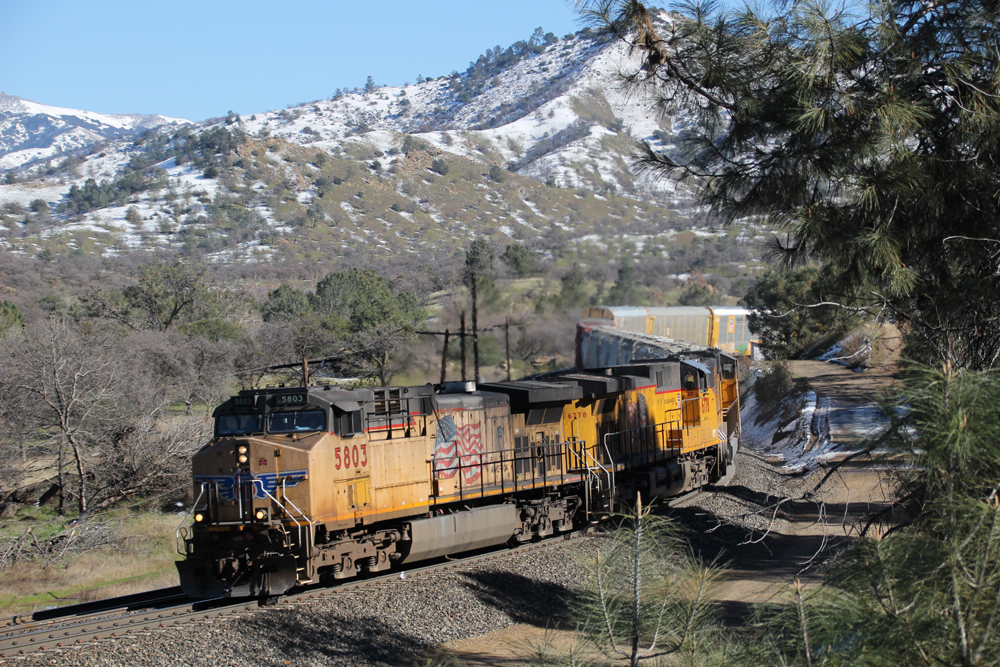
WASHINGTON — U.S. rail traffic saw another surge in the week ending Aug. 24, according to statistics from the Association of American Railroads.
U.S. railroads handled 516,807 carloads and intermodal units, a 9.5% increase over the same week in 2023. That included 228,858 carloads, up 1.2%, and 287,949 containers and trailers, up 17.1%.
This followed an 8% gain in the week ending Aug. 17 [see “U.S. weekly rail traffic jumps,” Trains News Wire, Aug. 22, 2024] and likely reflects, at least in part, the labor issues in Canada that shut down Canadian National and CPKC Aug. 22-25. Canadian traffic figures for the latest week, which include the first three days of that shutdown, show 65,550 carloads for the week, a 22% drop, and 49,890 intermodal units, a 28% decline.
Year-to-date traffic in the U.S., through 34 weeks of 2024, shows carload volume down 3.7% and intermodal traffic up 9.1%, for an overall gain of 2.9%.
North American figures for the week, from nine reporting U.S., Canadian, and Mexican railroads, included 310,429 carloads, down 4.5%; and 350,204 intermodal units, up 7.1. The total volume of 660,633 carloads and intermodal units represents a 1.3% increase.
In Mexico, volume for the week was 16,021 carloads, up 6.8% from the corresponding week in 2023, and 12,365 intermodal units, up 5.7%. Year-to-date traffic in Mexico is up 3.8%, while in Canada it is up 0.5%.














IMO unit numbers for IM containers can be subject to overstating. What if a international shipping container is taken to a break down location and the contents are put into a domestic container? Does that count as 2 units?
Then there is the returns which are harder to quantify.